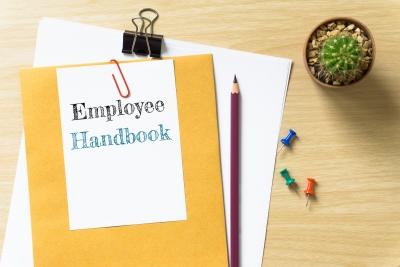The disclaimer and acknowledgment are two of the most important policies in your employee handbook. They will repeat much of the same information except the acknowledgment has a signature line. The disclaimer at the front alerts employees prior to reading the handbook and the acknowledgment at the back reminds readers at the end.
These two policies are essential for setting up the expectations of the employment relationship as well as describing the purpose of the handbook. Consider the following when writing an effective disclaimer and acknowledgment:
- Policies are guidelines
To maintain the employment-at-will relationship, it is essential to avoid language that expresses or implies a contract. Avoid contractual terms such as “will,” “must,” and “shall.” Also, avoid listing “steps” in policies such as Attendance and Standards of Conduct as they typically do not allow for employer discretion. Maintain flexibility. - Changes to policies
Give the organization the right to add, modify, revoke, suspend, terminate, or change any or all policies, practices, procedures, and benefits, in whole or in part, at any time, with or without notice. This should be clearly stated. Also, state that new policies supersede all previous written or verbal polices. - At-will language
Simply state the terms of the employment-at-will relationship. The organization cannot guarantee continued employment for any definite period of time, and the organization and the employee both retain the right to terminate the relationship at any time, with or without reason as long as it is consistent with the law. For executive positions that are governed by contracts, state that any decision must be made by the president of the company and that any agreement must be in writing signed by both the president and the employee. - Employee responsibilities
Inform employees they will be responsible for the information contained in the handbook and encourage them to ask questions. - The acknowledgment form
Have the employee sign the acknowledgment form at the time he or she actually receives the handbook. Make sure the form is dated to reflect when the handbook is in effect. There should be two copies of the acknowledgment form—one for the employee to keep and one to be returned to the personnel file.
Need help with your employee handbook? MRA’s Handbook experts can help you!



